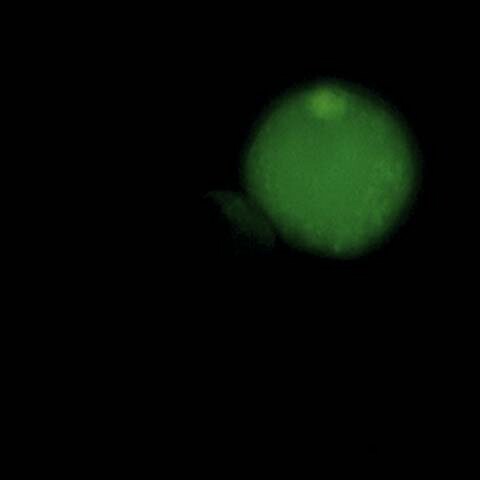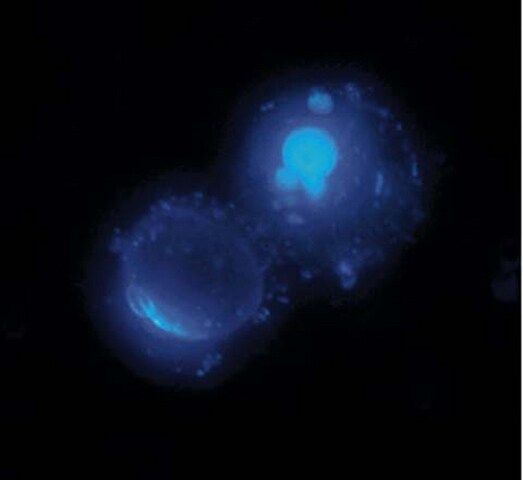您的位置:首页 > 产品中心 > CaspaTag Pan-Caspase In Situ Assay Kit, Fluorescein
CaspaTag Pan-Caspase In Situ Assay Kit, Fluorescein

| 产品编号: | 4117144 |
| 规格: | The In Situ FLICA Pan-Caspase Detection Kit for flow cytometry is a fluorescent-based assay for detection of active caspases in cells undergoing apoptosis. |
| 包装规格: | 100 ASSAYS |
| 产品类别: | 进口试剂 |
| 品牌: | Sigma-Aldrich |
| 优惠价: | 立即咨询 |
基本信息
| eCl@ss | 32161000 |
| General description【一般描述】 | Apoptosis is an evolutionarily conserved form of cell suicide, which follows a specialized cellular process. The central component of this process is a cascade of proteolytic enzymes called caspases. These enzymes participate in a series of reactions that are triggered in response to pro-apoptotic signals and result in the cleavage of protein substrates, causing the disassembly of the cell (Slee et al. 1999). Caspases have been identified in organisms ranging from C. elegans to humans. The mammalian caspases play distinct roles in apoptosis and inflammation. In apoptosis, caspases are responsible for proteolytic cleavages that lead to cell disassembly (effector caspases), and are involved in upstream regulatory events (initiator caspases). An active caspase consists of two large and two small subunits that form two heterodimers which associate in a tetramer (Walker et al. 1994; Wilson et al. 1994; Rotonda et al. 1996). In common with other proteases, caspases are synthesized as precursors that undergo proteolytic maturation, either autocatalytically or in a cascade by enzymes with similar specificity (Kumar 1999). Caspase enzymes specifically recognize a 4 or 5 amino acid sequence on the target substrate which necessarily includes an aspartic acid residue. This residue is the target for cleavage, which occurs at the carbonyl end of the aspartic acid residue (Thornberry et al. 1997). Caspases can be detected via immunoprecipitation, immunoblotting techniques using caspase specific antibodies, or by employing fluorochrome substrates which become fluorescent upon cleavage by the caspase. Test Principle: CHEMICON′s In Situ Caspase Detection Kits use a novel approach to detect active caspases. The methodology is based on Fluorochrome Inhibitors of Caspases (FLICA). The inhibitors are cell permeable and non-cytotoxic. Once inside the cell, the inhibitor binds covalently to the active caspase (Ekert et al. 1999). This kit uses a carboxyfluorescein-labeled fluoromethyl ketone peptide inhibitor of caspase (FAM-VAD-FMK), which produces a green fluorescence. When added to a population of cells, the FAM-VAD-FMK probe enters each cell and covalently binds to a reactive cysteine residue that resides on the large subunit of the active caspase heterodimer, thereby inhibiting further enzymatic activity. The bound labeled reagent is retained within the cell, while any unbound reagent will diffuse out of the cell and is washed away. The green fluorescent signal is a direct measure of the amount of active caspase present in the cell at the time the reagent was added. Cells that contain the bound labeled reagent can be analyzed by 96-well plate-based fluorometry, fluorescence microscopy, or flow cytometry. Application: The CHEMICON In Situ FLICA Pan-Caspase Detection Kit is a fluorescent-based assay for detection of active caspases in cells undergoing apoptosis. The kit is for research use only. Not for use in diagnostic or therapeutic procedures. |
| Application【应用】 | Research Category Apoptosis & Cancer The In Situ FLICA Pan-Caspase Detection Kit for flow cytometry is a fluorescent-based assay for detection of active caspases in cells undergoing apoptosis. |
| Components【组分】 | FLICA Reagent (FAM-VAD-FMK): Four lyophilized vials 10X Wash Buffer: 60 mL Fixative (10% formaldehyde): 6 mL Propidium Iodide: 1 mL at 250 μg/mL, ready-to-use Hoechst Stain: 1 mL at 200 μg/mL, ready-to-use |
| Legal Information【法律信息】 | CHEMICON is a registered trademark of Merck KGaA, Darmstadt, Germany |
产品性质
| Quality Level【质量水平】 | 100 |
| species reactivity (predicted by homology) | mammals |
| manufacturer/tradename | CaspaTag Chemicon® |
| technique(s) | activity assay: suitable flow cytometry: suitable |
| NCBI accession no.【NCBI登记号】 | NM_001223.3 NM_033292.2 NM_033293.2 NM_033294.2 NM_033295.2 |
| UniProt accession no.【UniProt登记号】 | P29466 P42574 P42575 P51878 P55211 P55212 Q14790 Q92851 |
| Detection Method | fluorometric |
| shipped in【运输】 | wet ice |
产品说明
| Storage and Stability【储存及稳定性】 | · Store unopened kit materials at 2-8°C up to their expiration date. · Reconstituted FLICA Reagent (150X) should be frozen at -20ºC for up to 6 months, and may be thawed twice during this time. Aliquot into separate amber tubes if desired. Protect from light at all times. · Store diluted (1X) wash buffer up to -20ºC for 2 weeks. |
| Disclaimer【免责声明】 | Unless otherwise stated in our catalog or other company documentation accompanying the product(s), our products are intended for research use only and are not to be used for any other purpose, which includes but is not limited to, unauthorized commercial uses, in vitro diagnostic uses, ex vivo or in vivo therapeutic uses or any type of consumption or application to humans or animals. |
安全信息
| Storage Class Code【储存分类代码】 | 10 - Combustible liquids |





